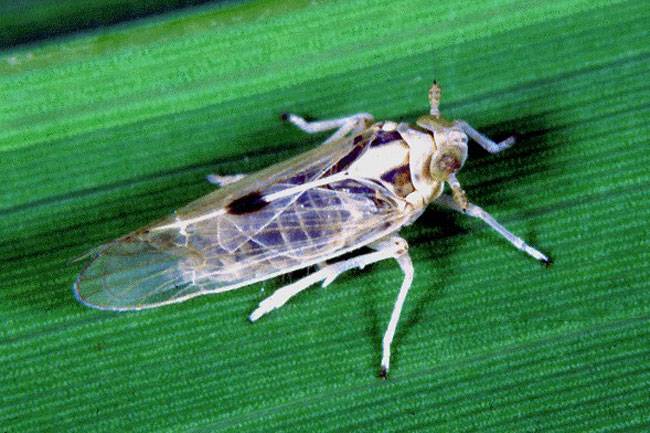Paddy
White Backed Plant Hopper

White Backed Plant Hopper
Sogatella furcifera

White Backed Plant Hopper
Sogatella furcifera
The white-backed planthopper (WBPH) is a destructive pest of rice, capable of causing significant yield losses. Its population dynamics are closely influenced by temperature and humidity, and its feeding and reproductive habits make it a formidable challenge for rice growers.
Lifecycle and Environmental Factors
Temperature:
- Nymphs develop within 12–17 days at temperatures ranging from 20–30°C.
- Population levels:
- Low: Cold and overcast weather
- Intermediate: Warm and rainy weather
- High: Warm and dry weather
Humidity:
- Laboratory rearing is successful at a relative humidity of 70–80%.
Damage Caused by WBPH
On Rice Seedlings:
- Severely infested seedlings are stunted, wilt, and eventually die.
On Older Rice Plants:
- Nymphs and adults suck sap at the base of the rice plant and on leaf surfaces.
- Plants turn yellow, then rust-red, starting from the leaf tips and spreading.
- Severe infestation results in hopperburn, causing tillers to dry and turn brown.
- Gravid females damage plants by making oviposition punctures in leaf sheaths.
- Honeydew secretion promotes mold growth, giving fields a smoky appearance.
On Rice Grains:
- Infestation during the panicle initiation stage reduces grain number and panicle length.
- During the heading stage, grains become brown or remain unfilled.
- Attack during the maturation stage leads to delayed ripening and poorly filled grains.
WBPH is a persistent threat to rice production, with its lifecycle and feeding habits causing widespread damage from seedling to maturity stages. Effective management practices, including environmental monitoring and integrated pest control, are essential to mitigate its impact.
